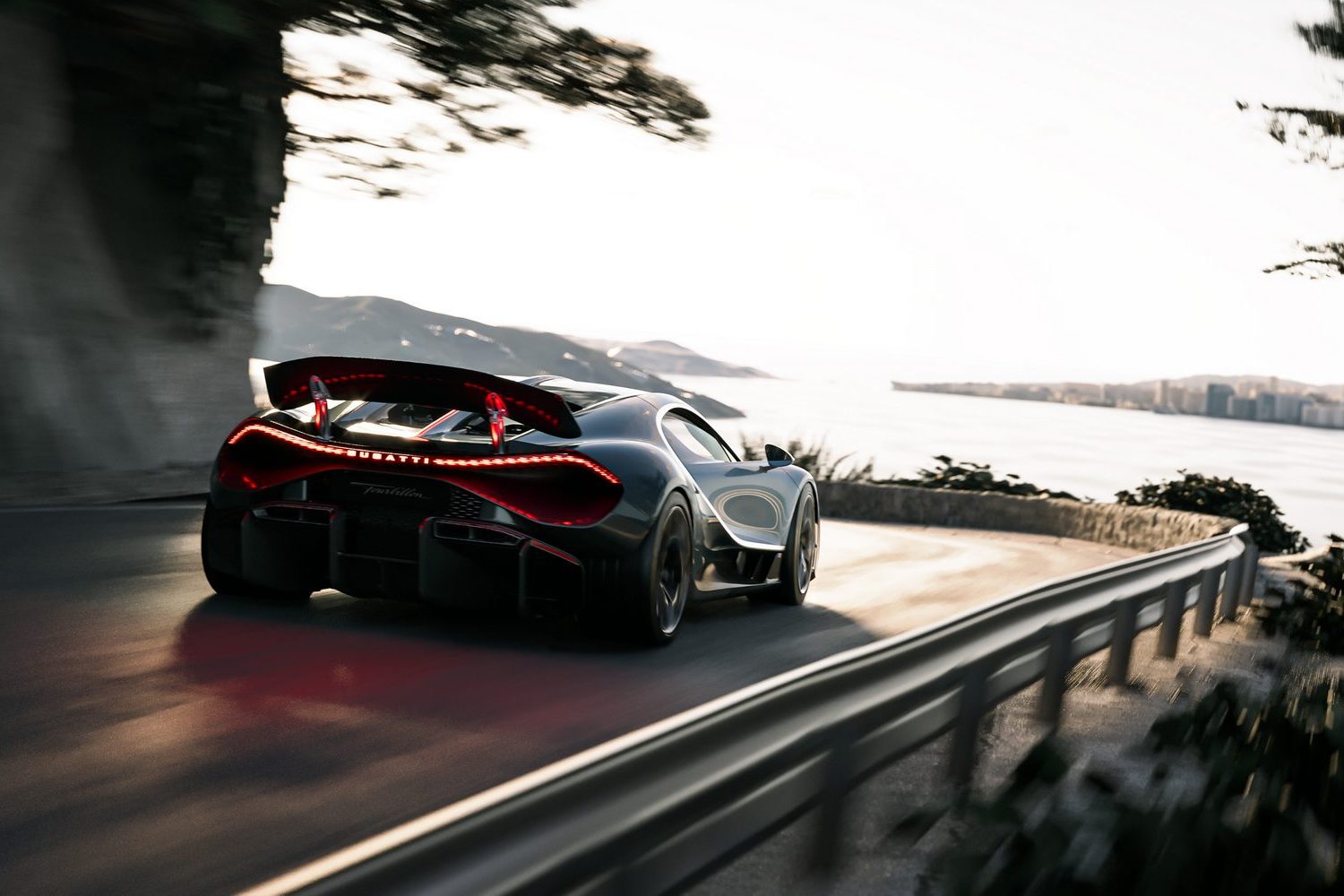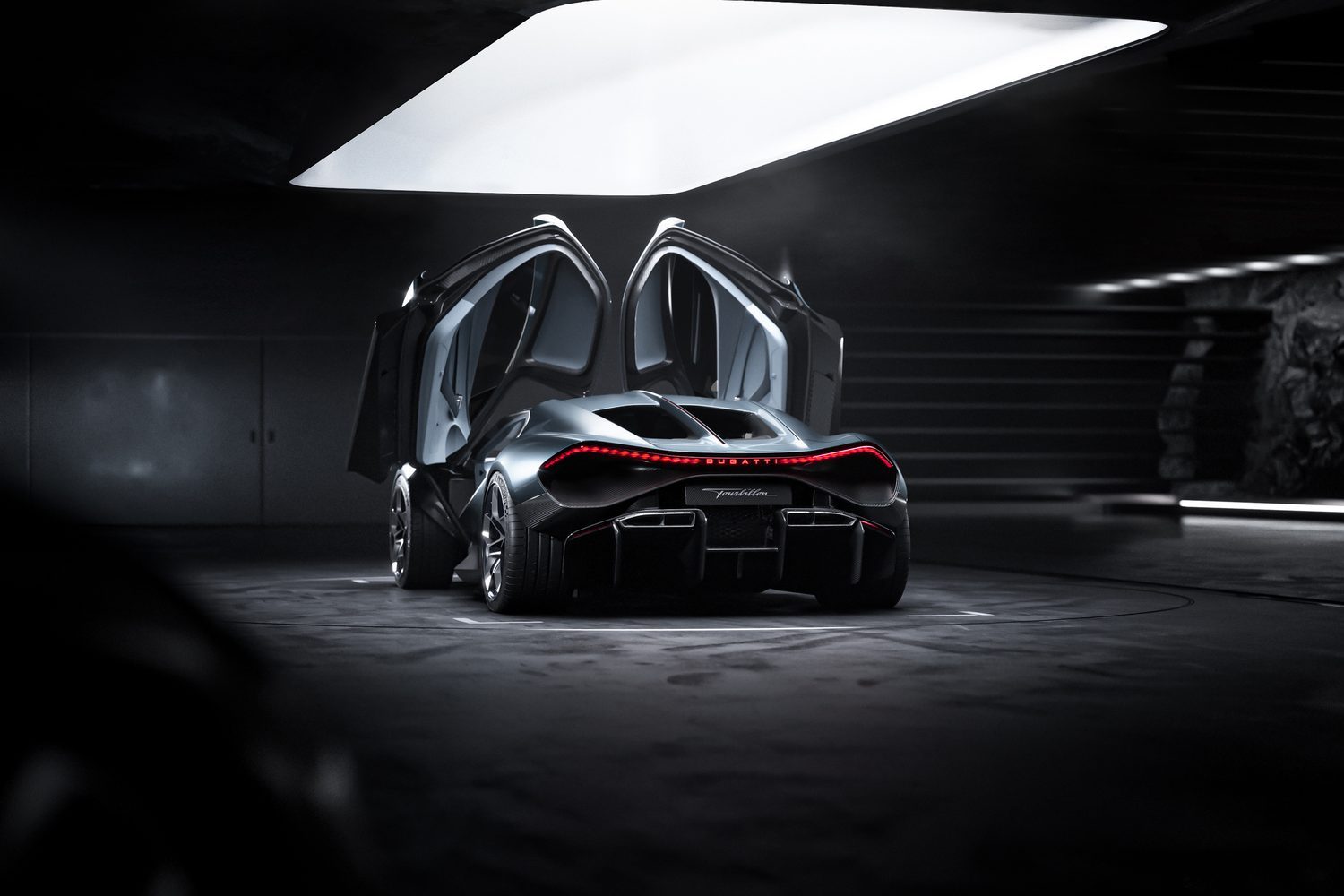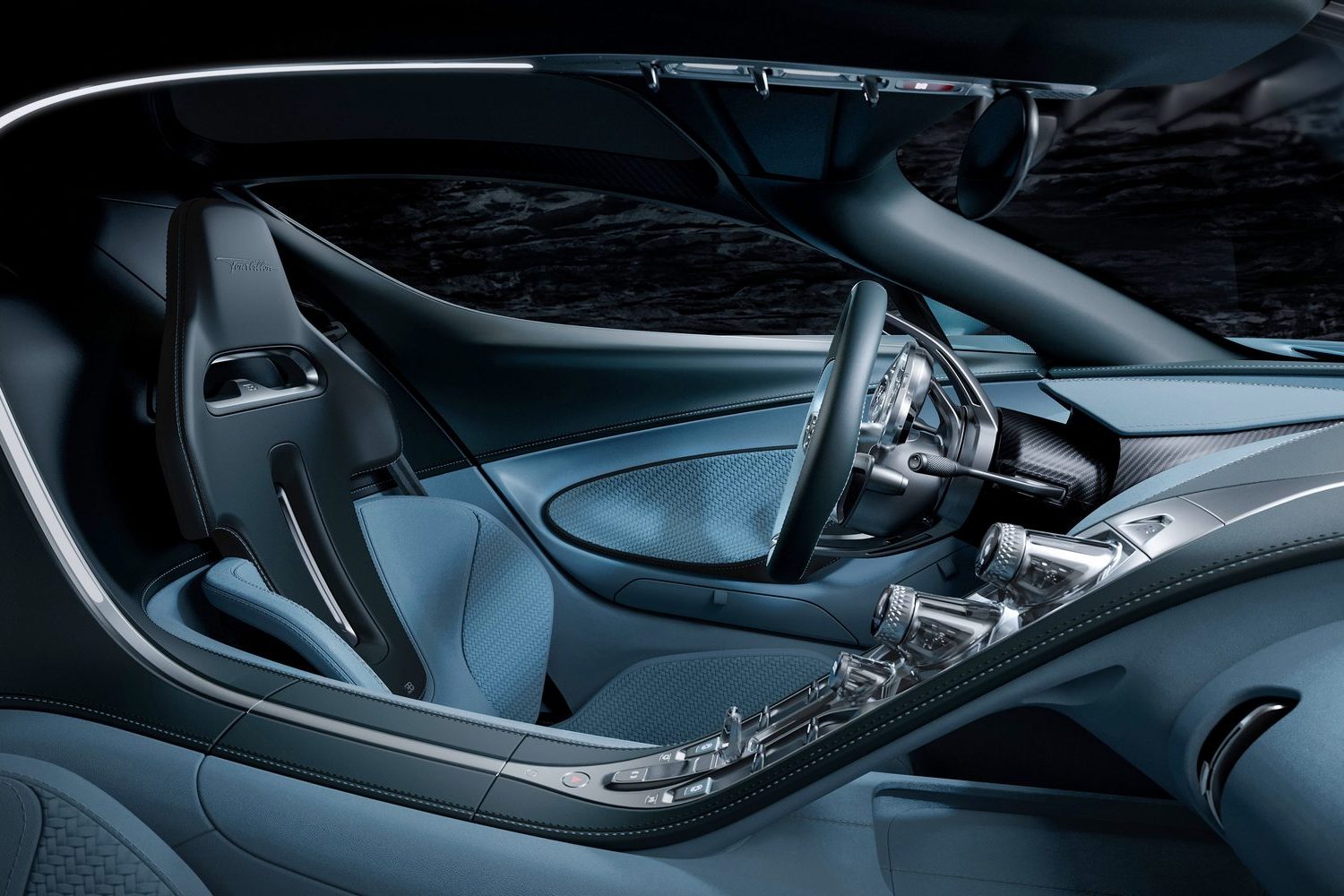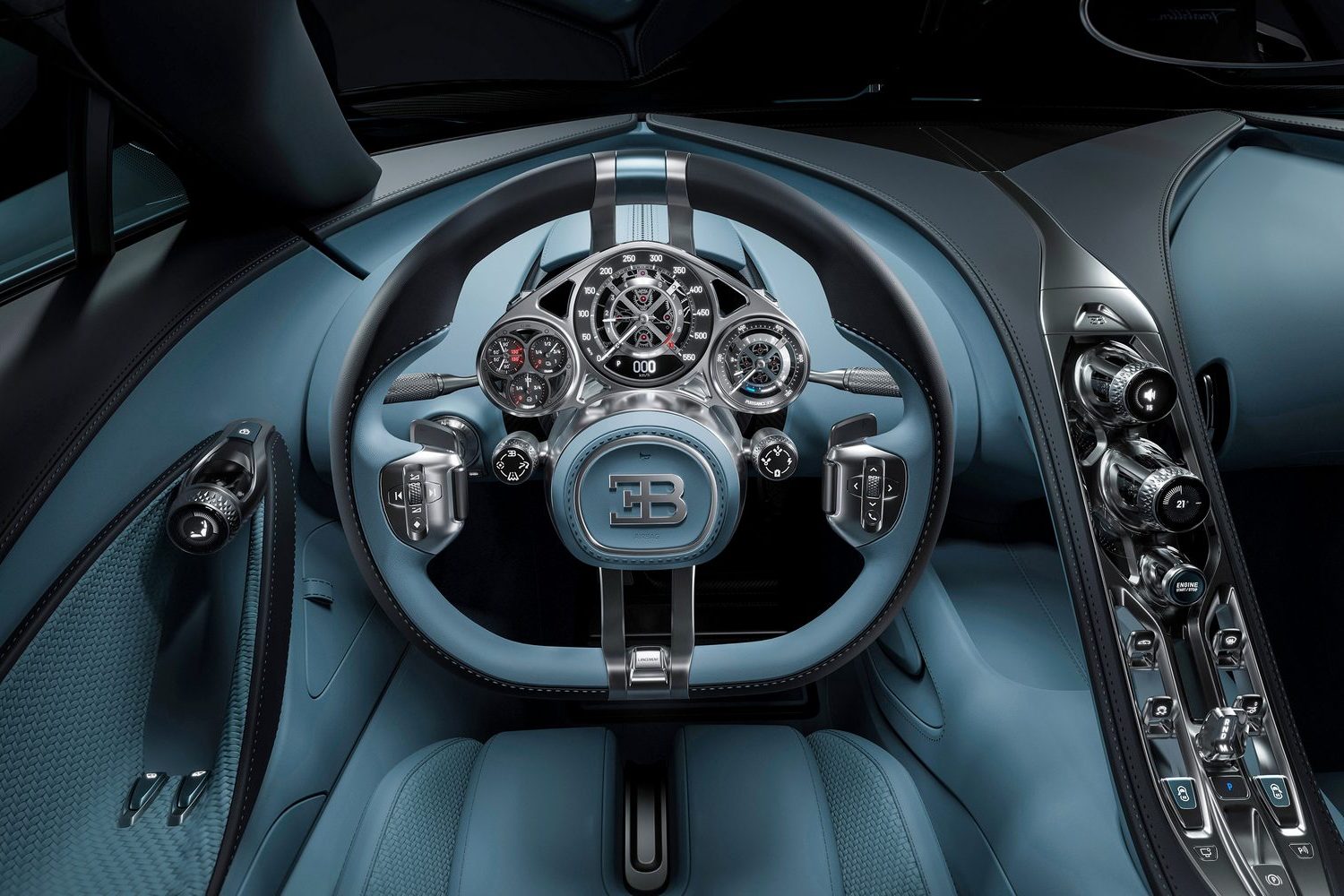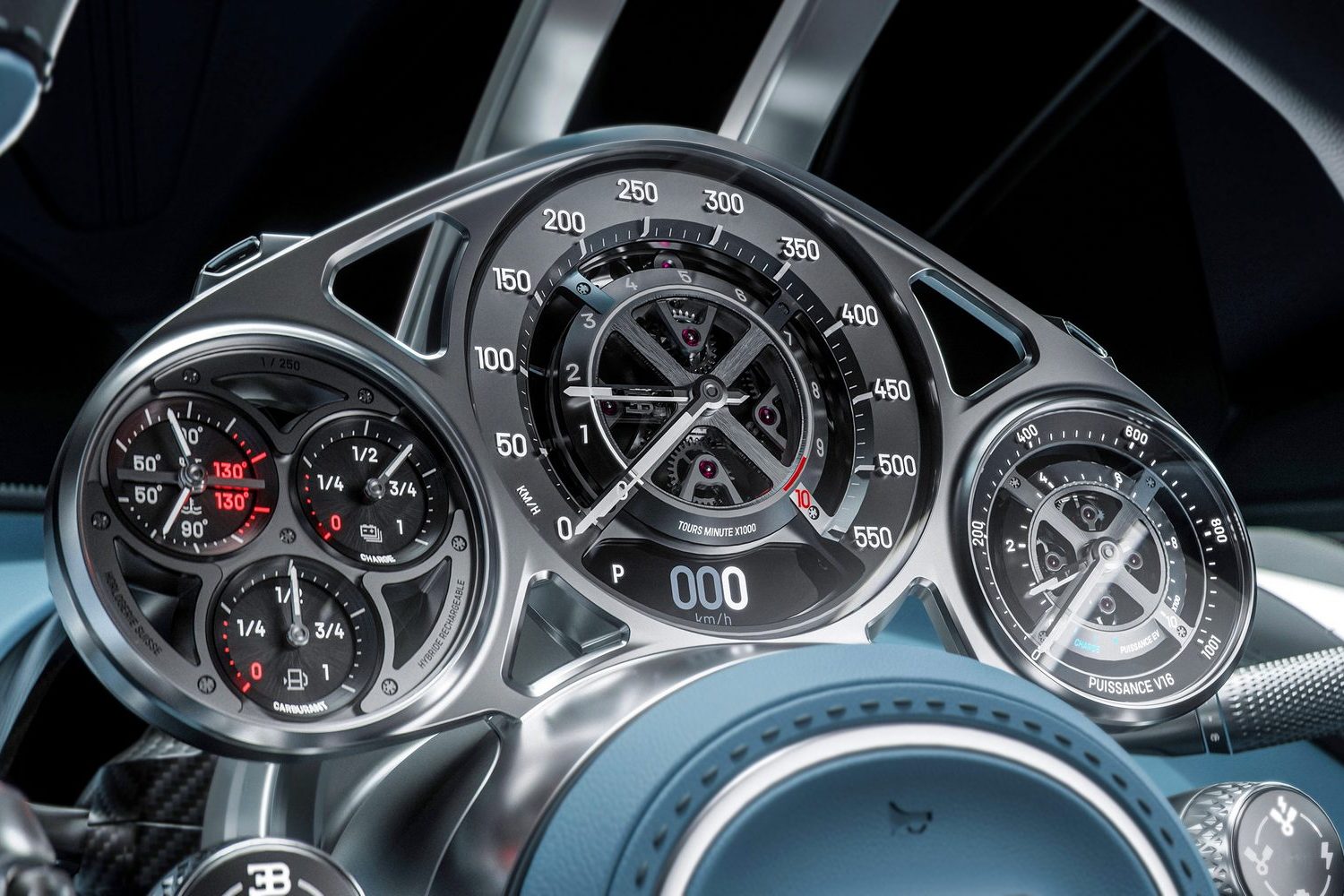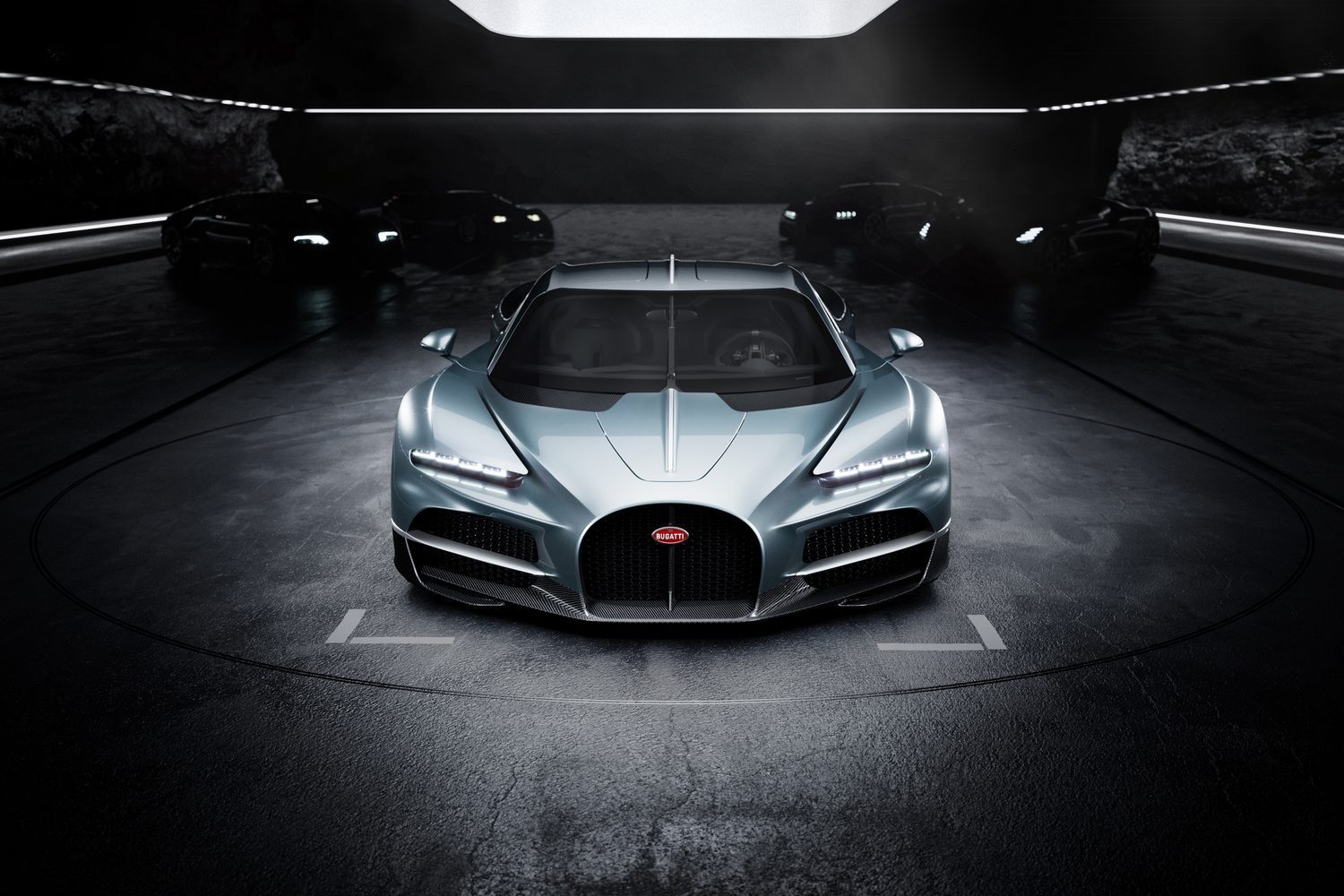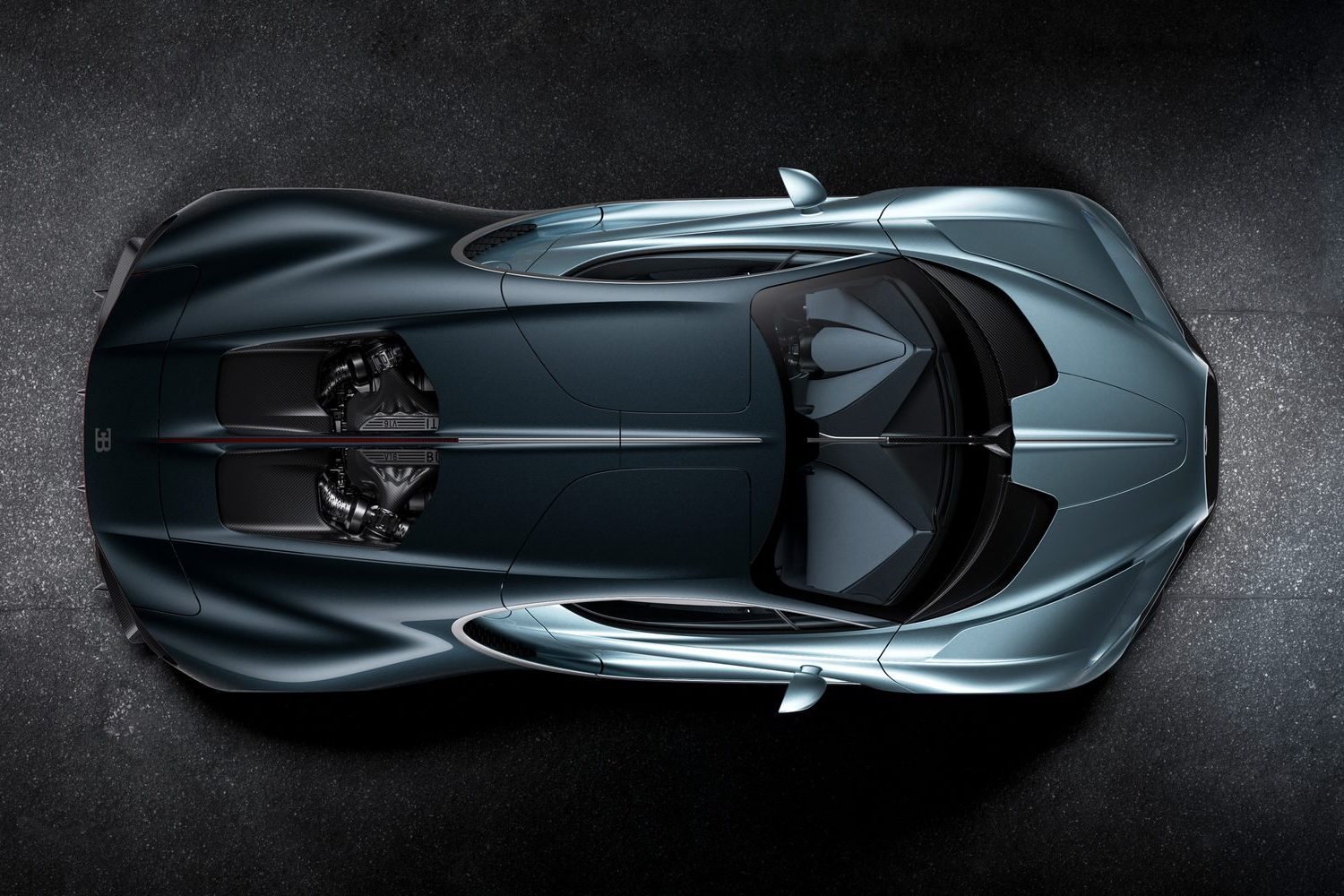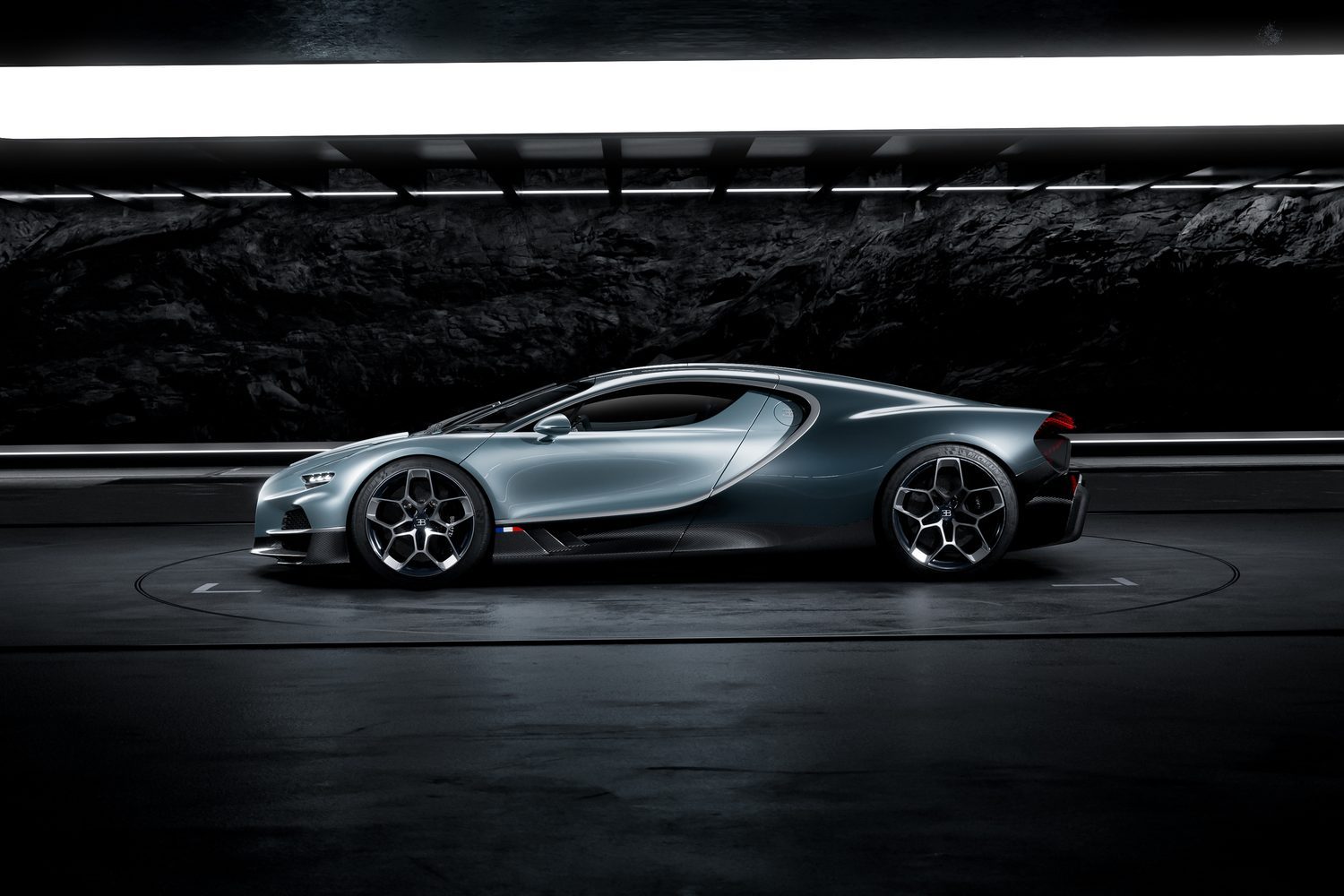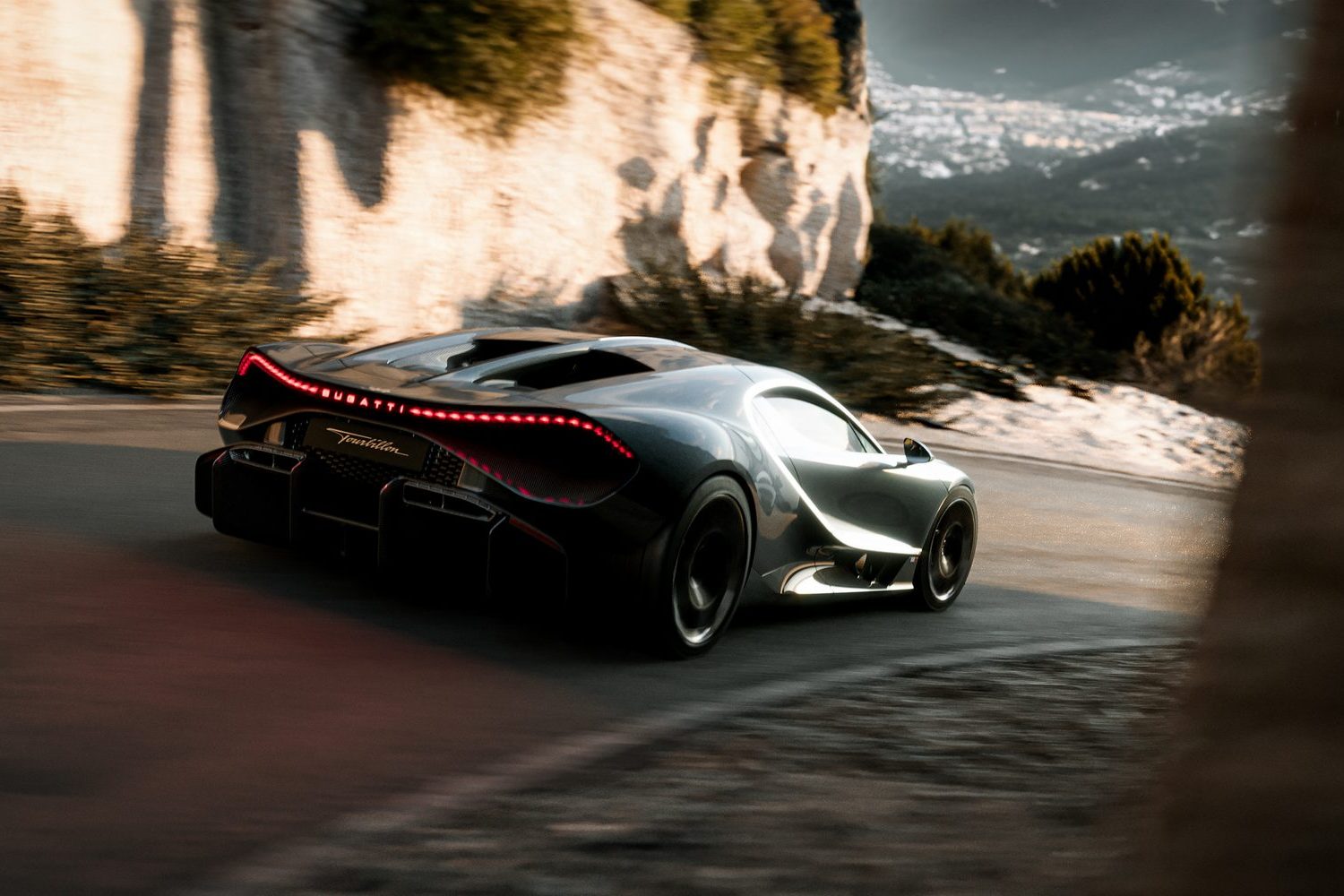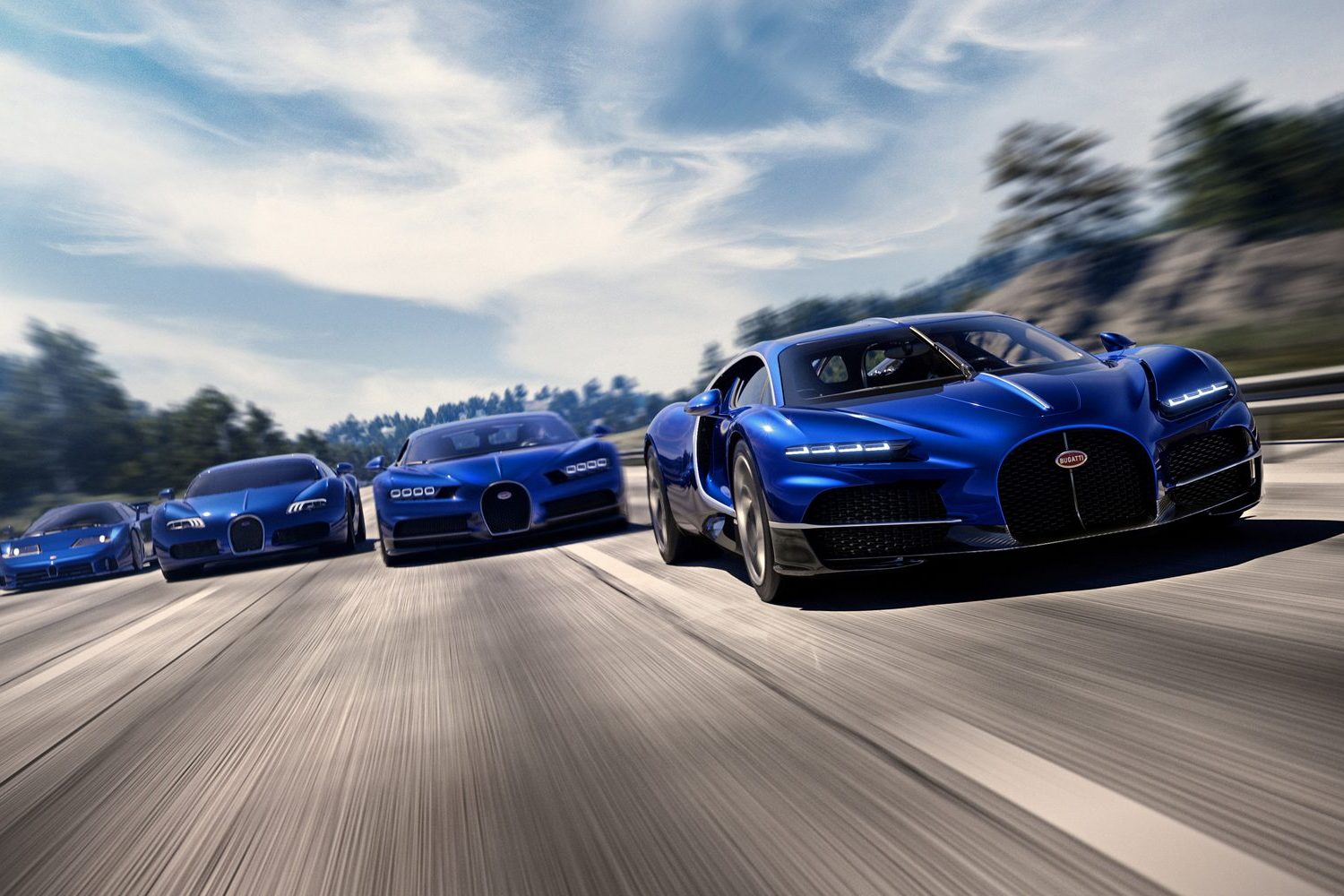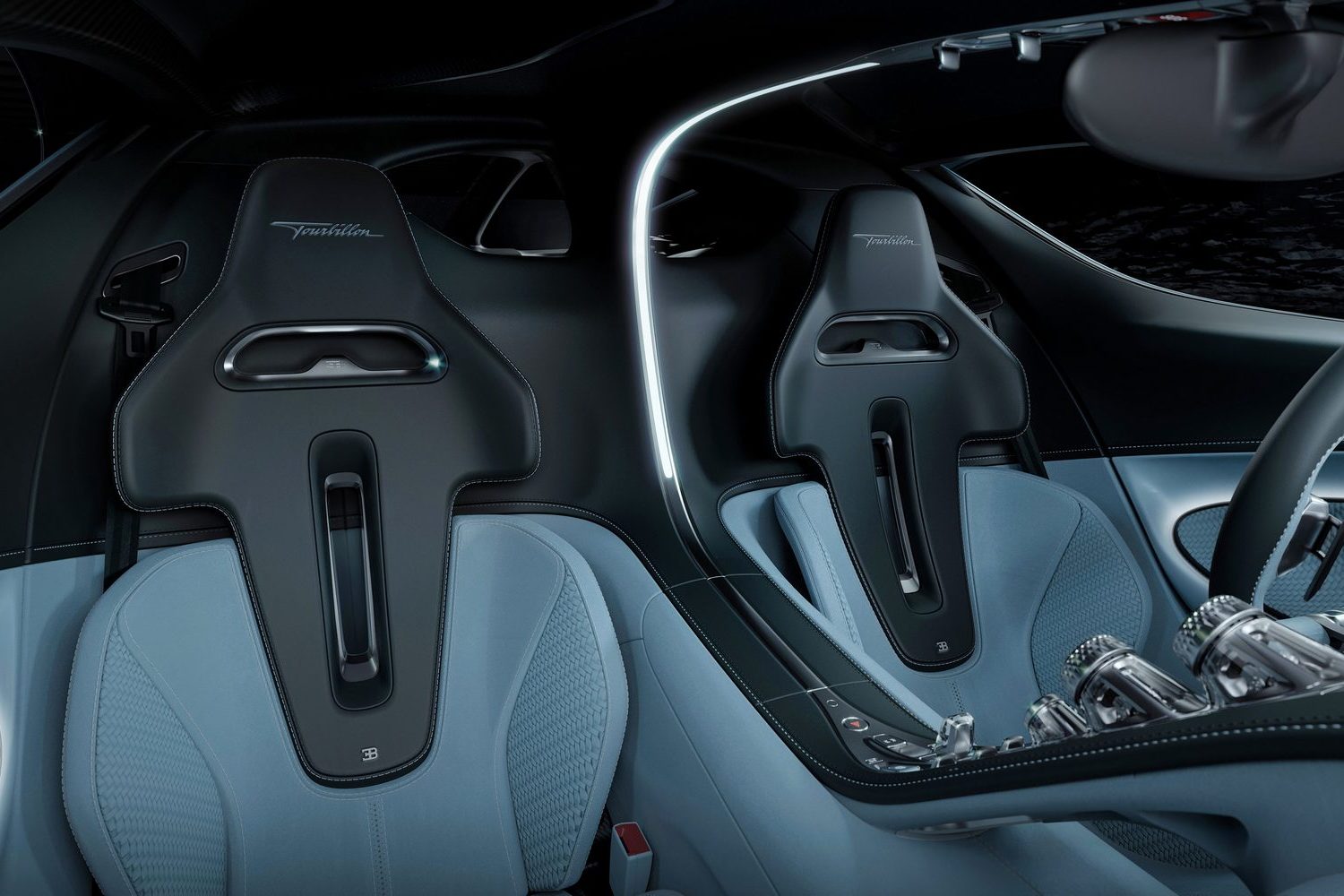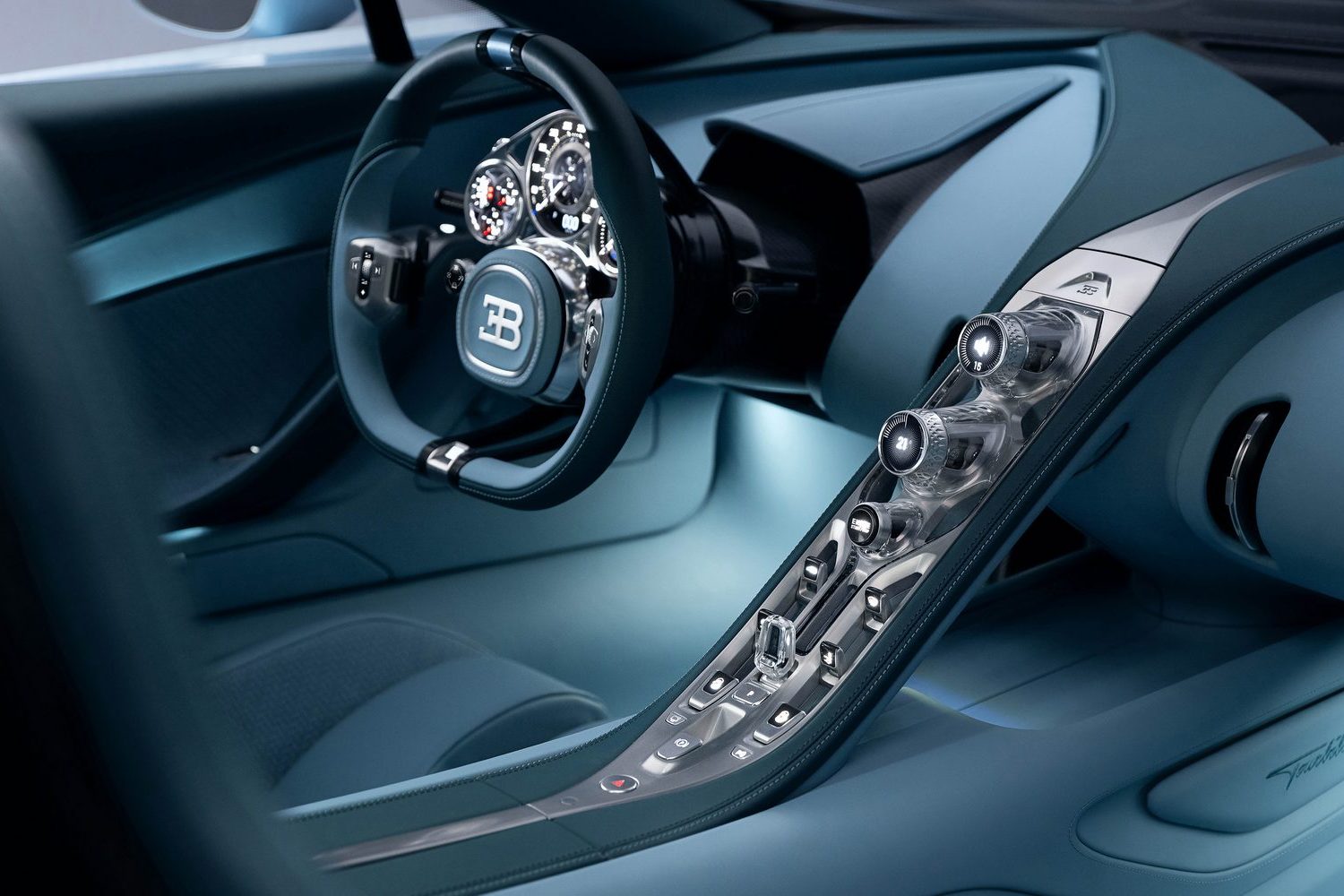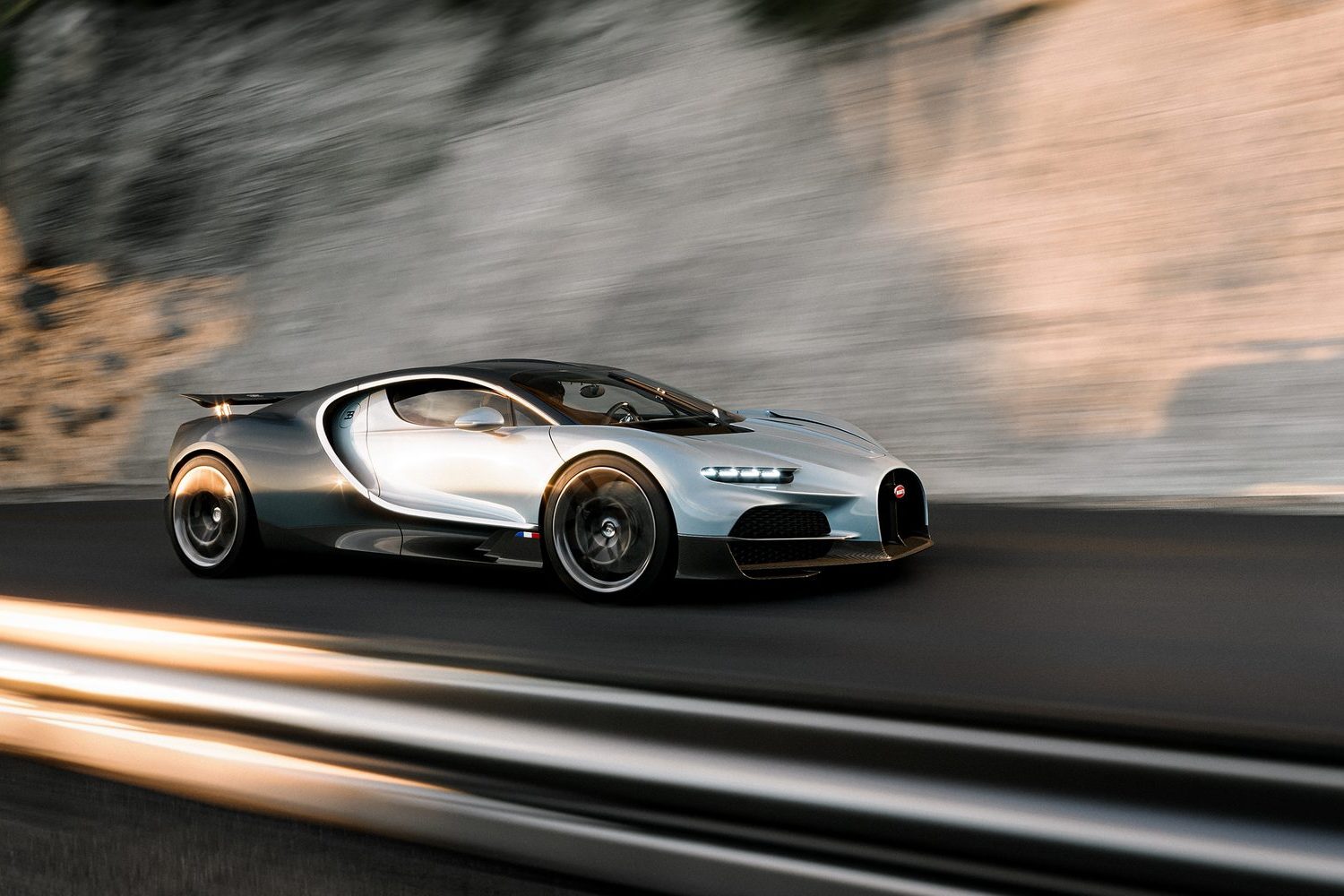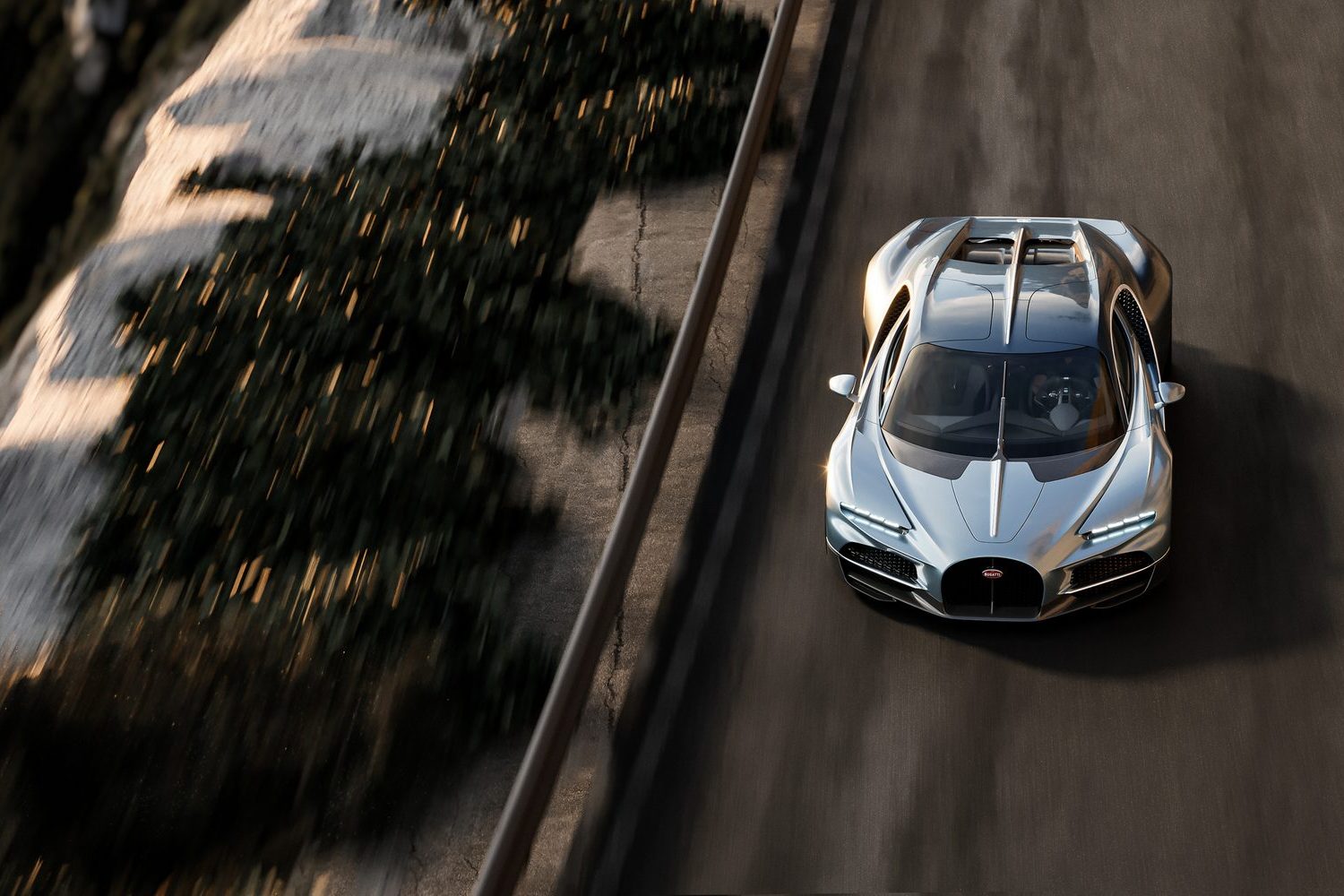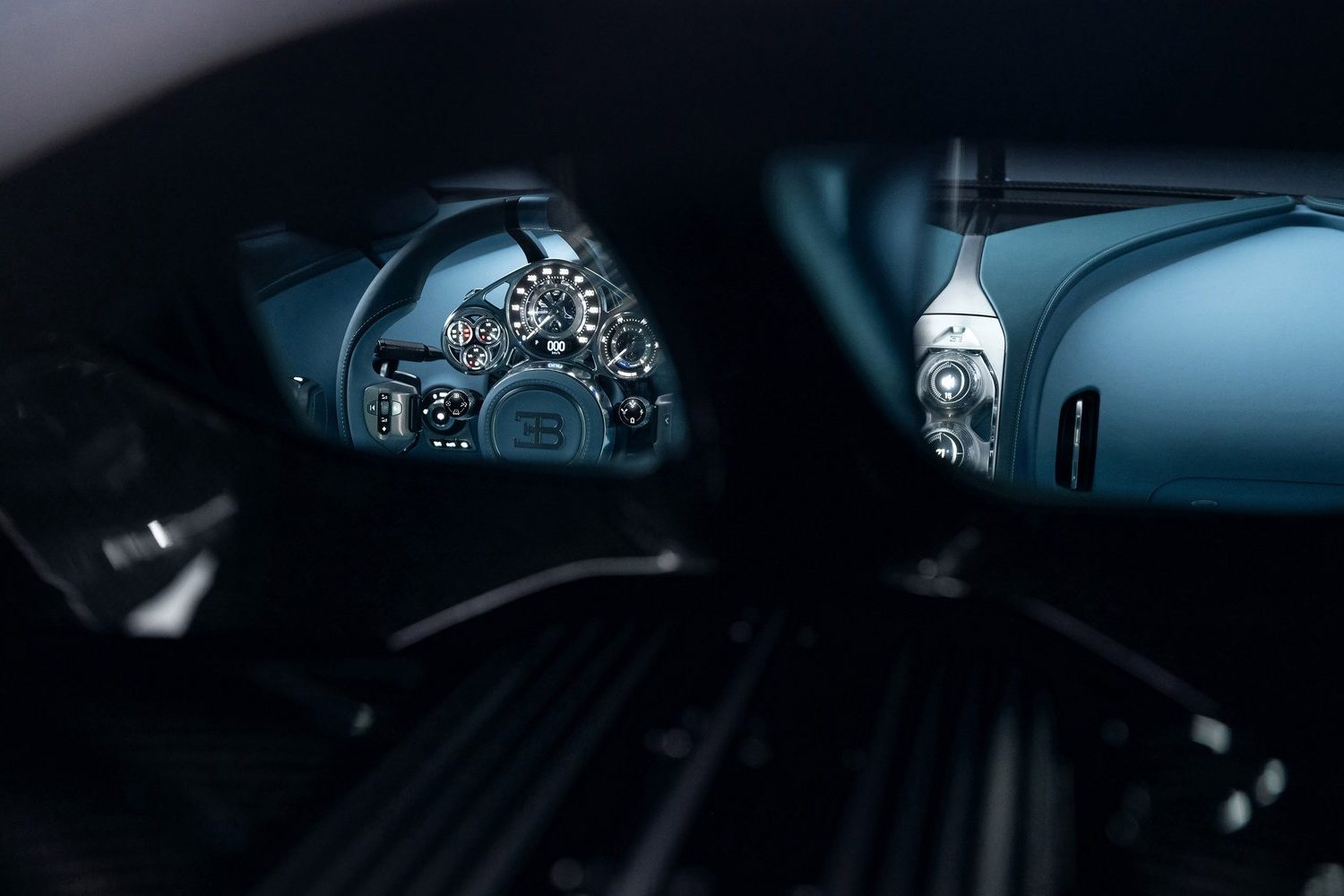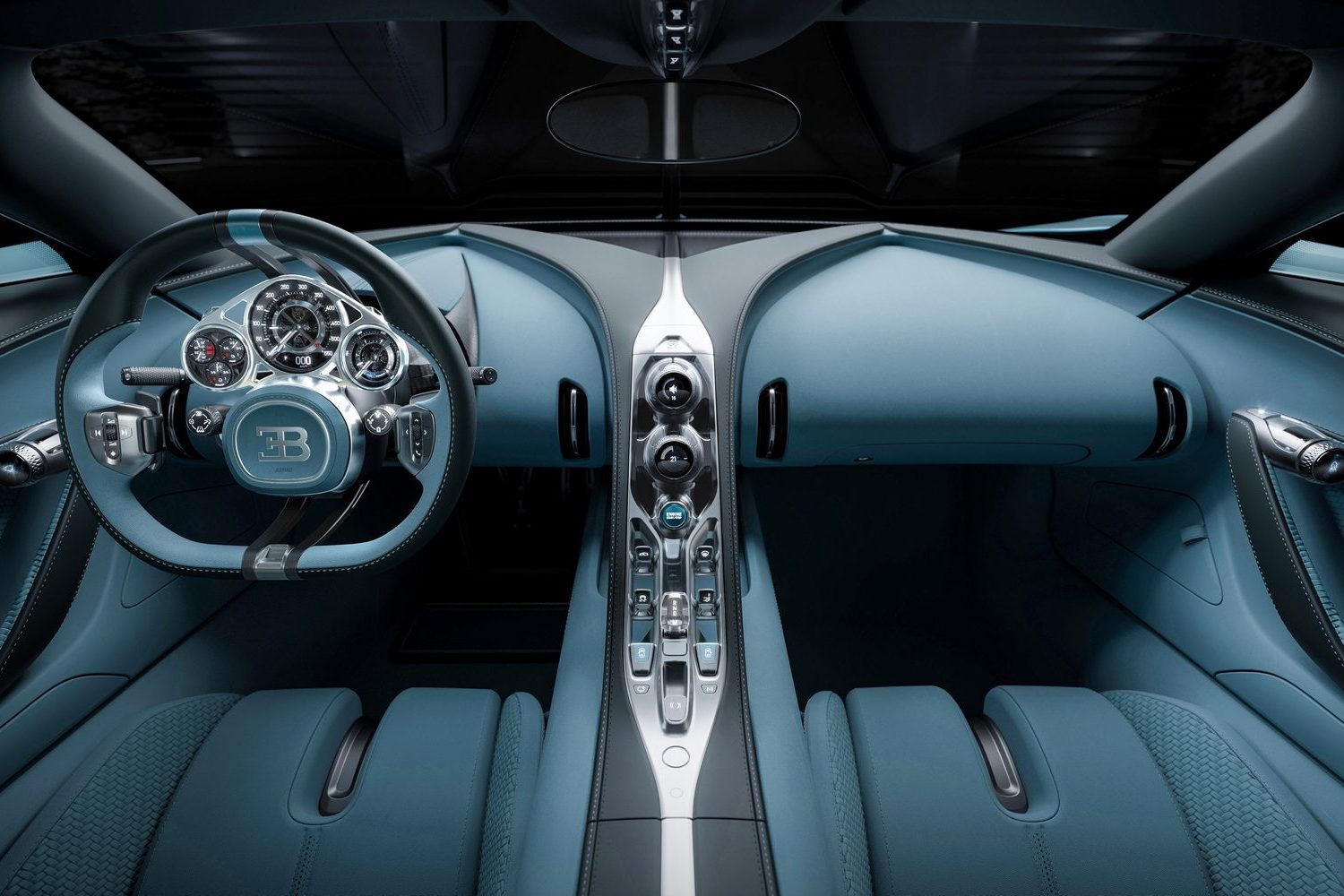Bugatti doesn’t launch many new cars. In fact, since the brand was revived by the Volkswagen Group in the early 2000s, it has launched just two - the Veyron and Chiron. Those multi-turbo, multi-cylinder, 400km/h+ cars - arguably the first true hypercars - have now been succeeded by this, the new Tourbillon.
The name is significant. Bugatti’s two previous 21st century models were named after racing drivers who competed in Bugattis in the 1920s and 1930s - Pierre Veyron and Louis Chiron. This new car is named Tourbillon not after a driver or a person, but after a particularly expensive and highly technical watch design, originating in France in the 1800s, and which was supposed to counteract the effect of gravity on a time-keeping mechanism so as to ensure greater accuracy. Bugatti says that a watch-making tourbillon is: “A completely original creation without compare, it is both complex and beautiful.” Clearly, the company thinks its new car is just the same.
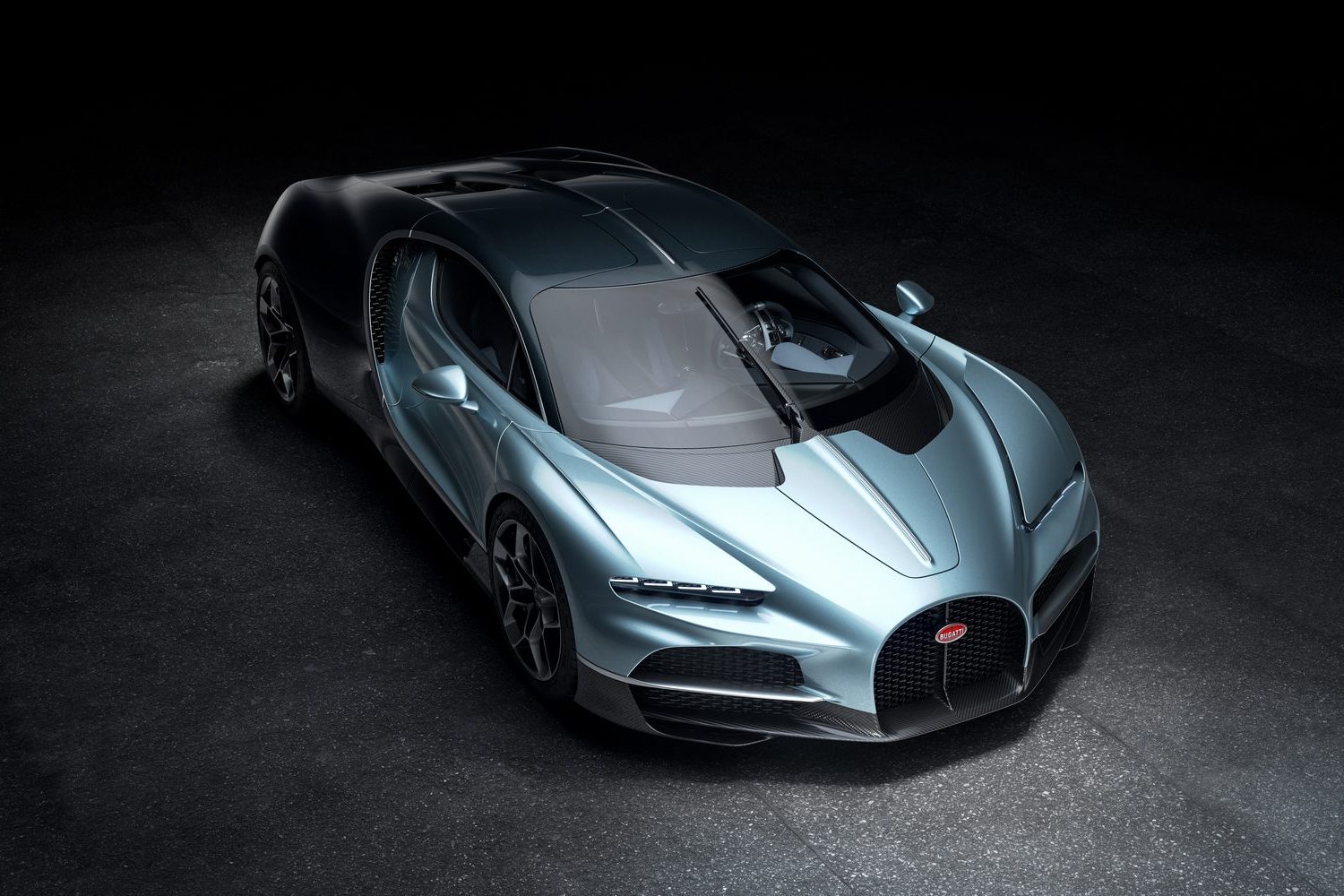
Does it carry over the turbocharged W16 engine from the Chiron?
No, the Tourbillon gets - somewhat surprisingly given that we stand on the cusp of the all-electric era - a completely new V16 engine, naturally aspirated, and combined with a plug-in hybrid module. The engine - an 8.3-litre unit developed with the help of Cosworth - produces 1,000hp while the three electric motors (two for the front and one at the rear) add a further 800hp. Those electric motors, which spin at up to 24,000rpm, are fed energy from a 25kWh battery which is cooled by oil and mounted in the central tunnel between the two seats. Bugatti claims a 60km electric-only range if you plug it in and charge it up, although it has admitted that the purpose of the motors is really for such things as power, throttle response and torque-fill during gearshifts. Nonetheless, the battery architecture uses cutting-edge 800-volt charging, so owners can fast-charge it when they’re out and about.
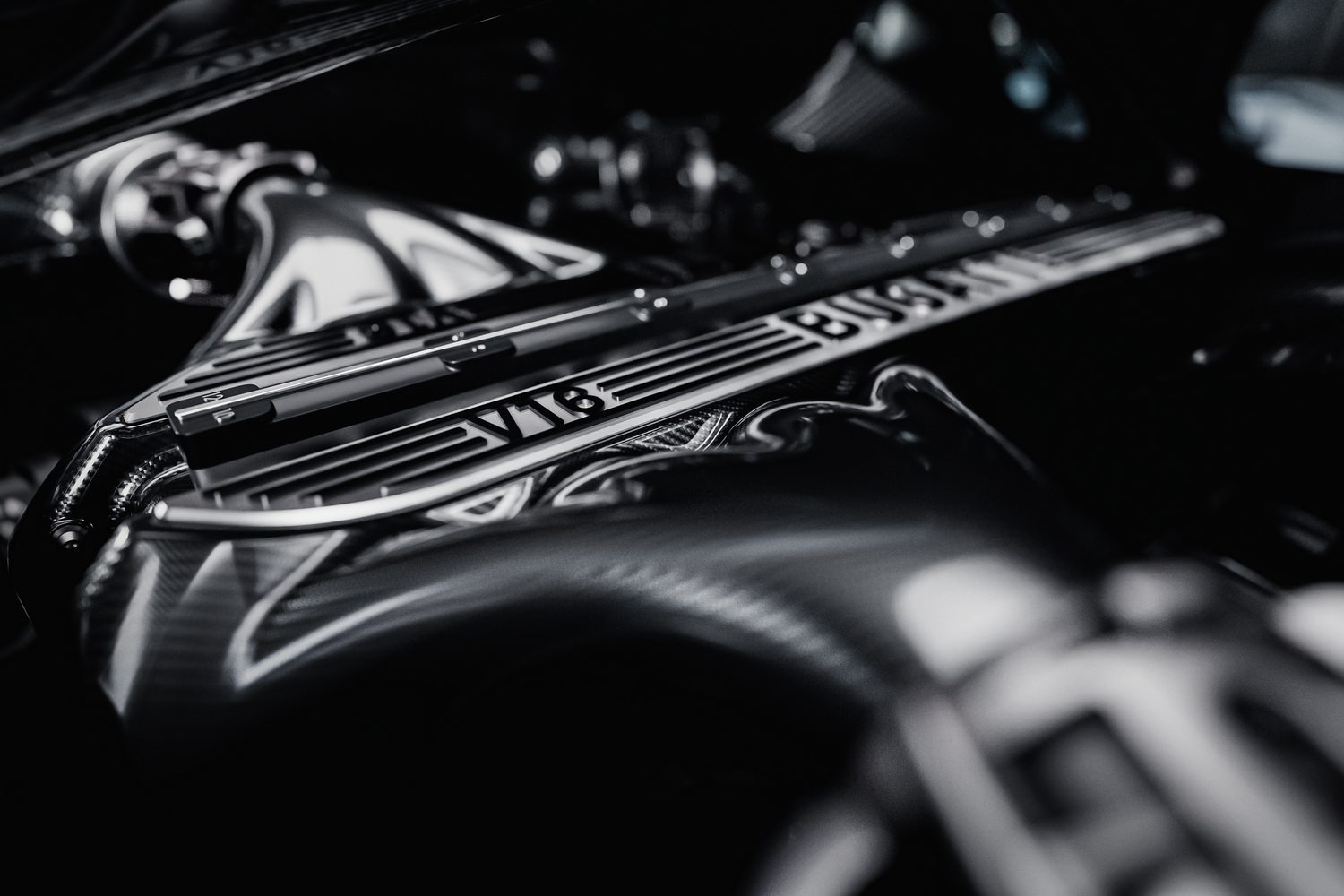
That combination of petrol and electric power not only makes the Tourbillon the most powerful combustion-engined car in the world today, it also probably makes it the fastest. For the moment, it’s being advertised with a top speed of 445km/h, but Bugatti’s boss, Mate Rimac (also the head of his own eponymous electric car company, of course) has said that figure is preliminary. It’s likely that the Tourbillon will the first production car to achieve 483km/h (300mph) in standard form (the Bugatti Chiron could do so, but only with modifications to the tyres and aerodynamics).
Redlined at 8,000rpm, the mighty V16 and its electric helpers can shove the Tourbillon - which is impressively slightly lighter than the Chiron, at 1,995kg - to 100km/h in as little as two seconds. Perhaps even more impressively, a time of 25 seconds has been spoken of to get from standstill to 400km/h and back to a standstill again.
In spite of his expertise in electric cars, Rimac has said that he doesn’t see a need for Bugatti to switch to electric power anytime soon, because it makes so few cars and they cover such little mileage.
It does look a lot like a Chiron...
It does, but there are subtle differences such as the nose, which sticks out more prominently around the traditional Bugatti ‘horseshoe’ grille. Obviously for a car designed to exceed 400km/h, very careful attention has been paid to the aerodynamics, and there’s some clever engineering too such as the way that the rear diffuser is also part of the rear crash structure.
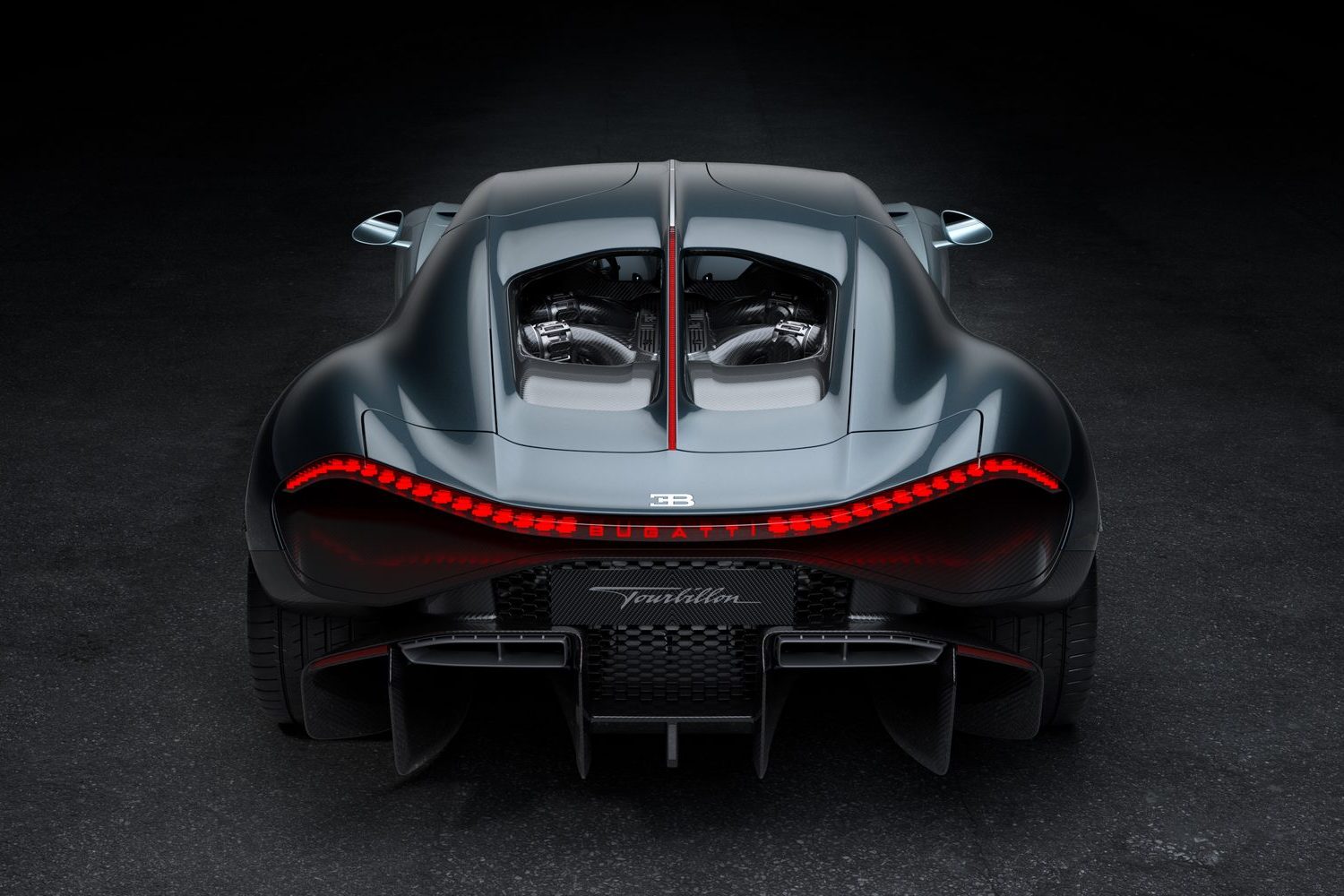
There’s also a lot of cooling and thermodynamic work that has to be incorporated (imagine how hot that V16 gets when you’re running at speed...) but the Tourbillon is also passably practical, with luggage space in the nose and dihedral doors which swoop up and down electrically. At the rear, as with the Veyron and Chiron, there’s an articulated wing, which adjusts the downforce levels according to how you’re driving, and which stows away, flat and sleek, for when you want to try a maximum speed run.
What about the interior?
Given the Tourbillon name, Bugatti wanted to steer away from digital instruments for the car, instead giving it a set of stunning analogue dials, mounted within the rim of the steering wheel, and actually designed and made by proper Swiss watch-makers. The instrument cluster uses titanium construction and is inlaid with sapphires and rubies for a genuine gemstone sparkle. The whole thing weighs just 700g. The instrument panel is fixed to the steering wheel hub and remains level as you turn the wheel, whose spokes connect to the hub behind the dials.
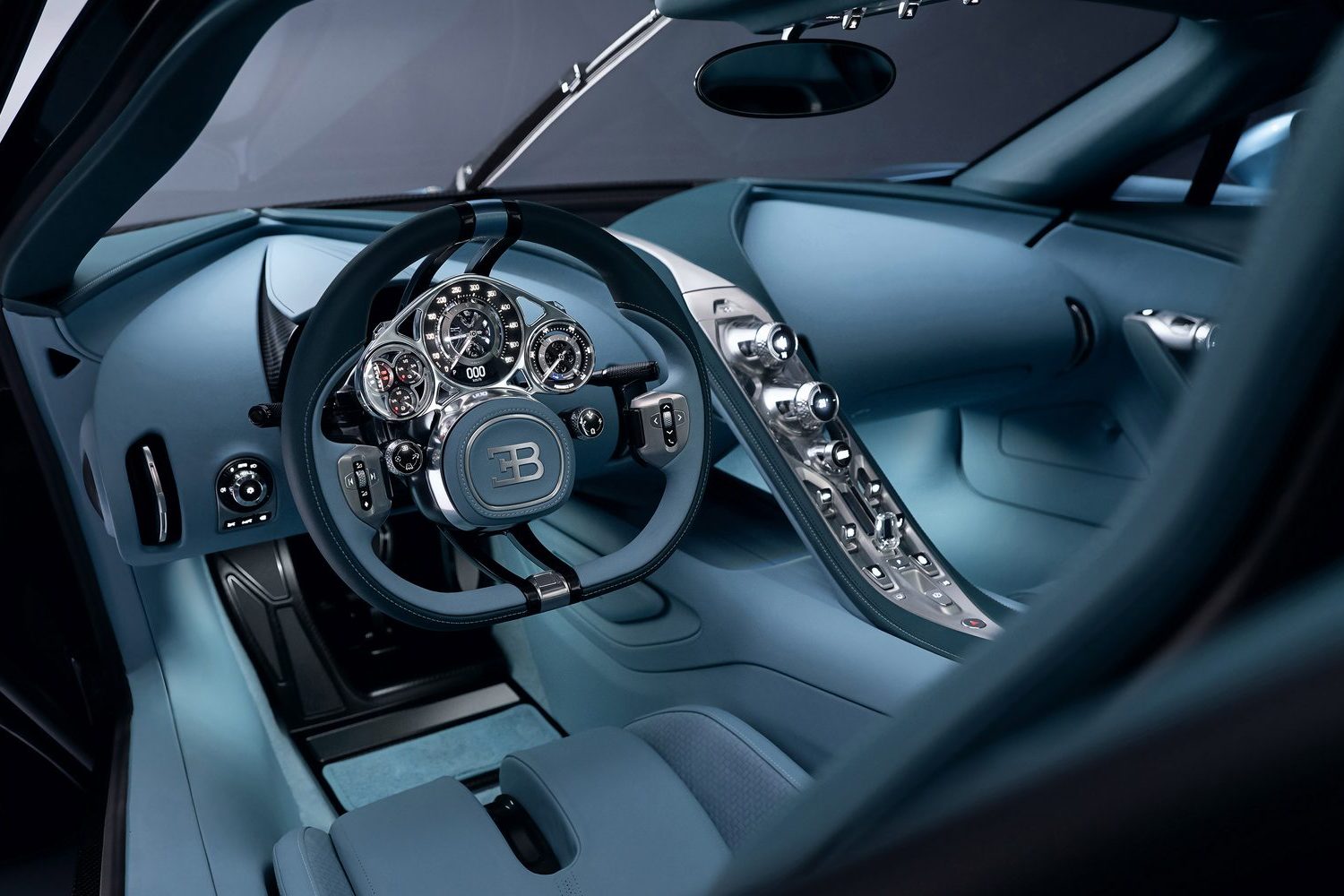
On the centre console, there’s a combination of crystal, glass and aluminium which allows you to see the workings of the various switches as you use them (just like a tourbillon watch). The aluminium backbone of the console has been milled and machined from a single metal billet, while the starter button harks back to classic 1930s Bugattis in that you pull it out to start the engine and push it in to switch everything off.
Glancing at the Tourbillon’s cabin, you’ll notice that there’s not a big screen. Instead, there’s a small display that deploys from the top of the dash when you want it, and rotates from the vertical, portrait mode (for using the reversing camera) to landscape mode for using the infotainment system.
Bugatti says that it has taken this ‘digital detox’ route to the Tourbillon’s cabin design, and gone with physical and analogue fittings, because it wants to imagine the car being displayed at concours events in ten, 50, or even 100 years’ time - just as its historic models are.
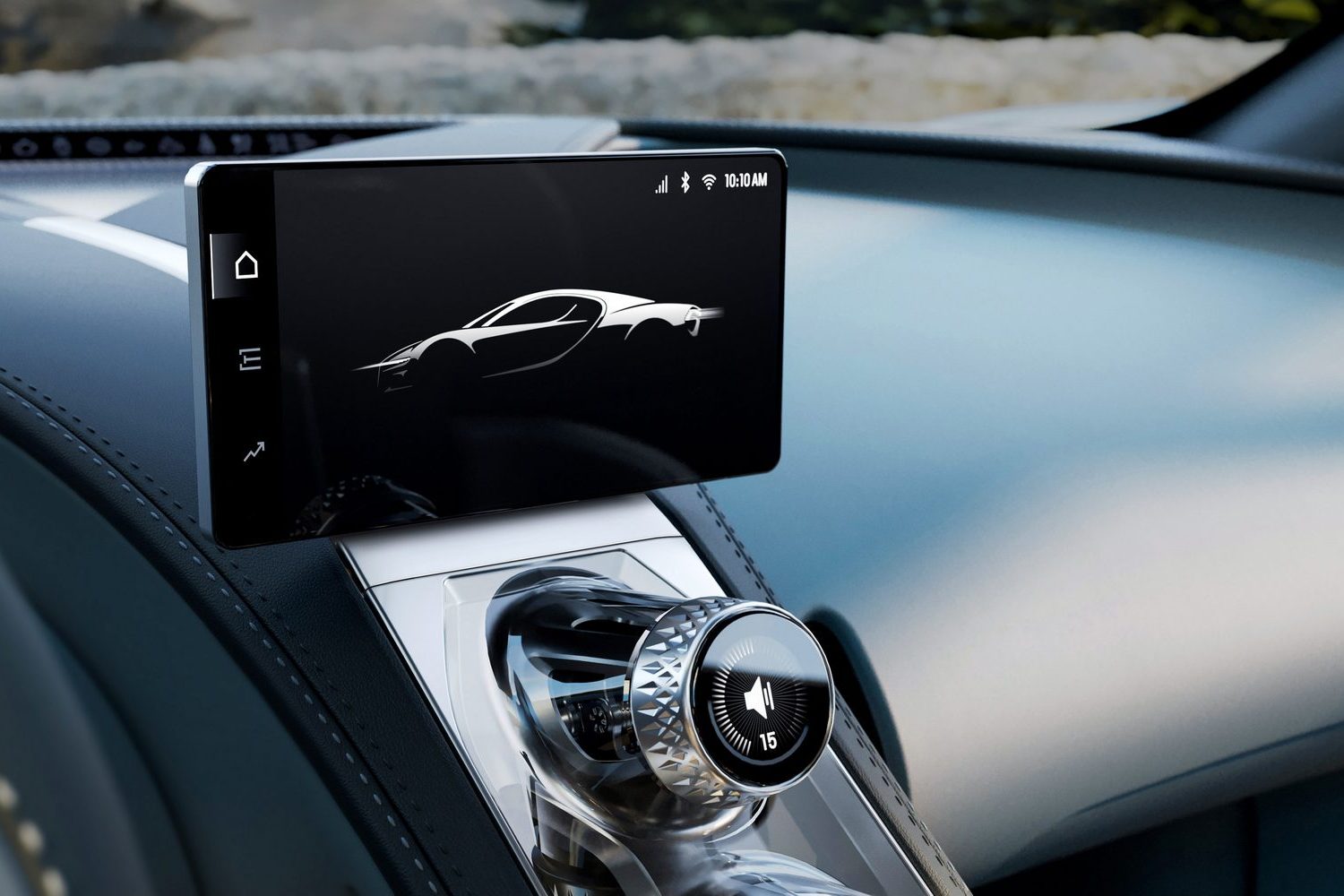
Go on then, how much?
Are you sitting comfortably? It’s €3.8 million, and that’s before local taxes. Imagine what would happen if you rang up Revenue and asked for a VRT quote. Only 250 Tourbillons will be produced, although you can expect Bugatti to swerve around that figure somewhat with special models in the future.
Speaking at the Tourbillon’s launch, Bugatti boss Mate Rimac said: “The development of the Bugatti Tourbillon was guided at every step by the 115 years of Bugatti history and the words of Ettore Bugatti himself. His mantras ‘if comparable it is no longer Bugatti’ and ‘nothing is too beautiful’ were a guiding path for me personally, as well as the design and engineering teams looking to create the next exciting era in the Bugatti hyper sports car story.



